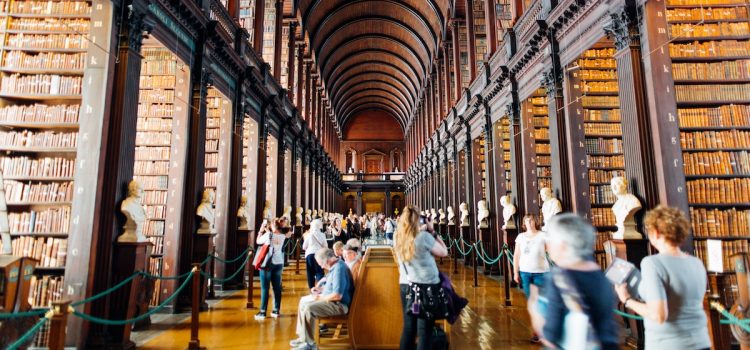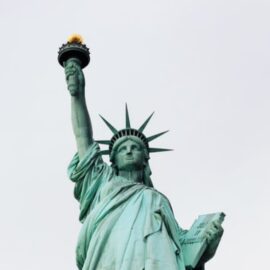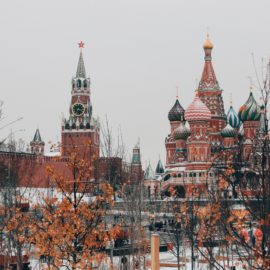

This article is an excerpt from the Shortform book guide to "Excellent Sheep" by William Deresiewicz. Shortform has the world's best summaries and analyses of books you should be reading.
Like this article? Sign up for a free trial here.
What factors do college admissions teams look at? What effect does this have on social mobility?
In Excellent Sheep, William Deresiewicz identifies four factors that elite schools’ admissions teams consider, and he discusses how each factor privileges affluent students. He also explores why this exclusion of non-elite students perpetuates social inequality in education.
Read more to understand Deresiewicz’s argument.
Exclusion of Non-Elite Students
According to Deresiewicz, elite schools’ criteria are so selective and narrowly defined that mostly only upper-class students have the means to meet them. He argues that this contributes to social inequality in education.
Four Factors That Exclude Non-Elite Students
Admissions teams consider the following factors, each of which privileges upper-class students:
Standardized test scores. Admissions teams rely on these scores as a measure of intelligence, but the author cites evidence that standardized test scores correlate with family income instead of intelligence. This correlation reflects the fact that wealthy families can afford to access supports that boost their students’ scores, such as well-funded schools, test preparation courses, and tutors.
Leadership experience. The evidence admissions officers use to measure a student’s leadership potential reflects a bias toward leadership experiences wealthy students can access (such as service trips) over those of many lower-income students (such as providing childcare for siblings).
Extracurriculars. Elite schools prefer students who engage in many extracurricular activities, believing this indicates well-roundedness. However, these criteria privilege upper-class students, who are more likely to attend well-funded schools. Well-funded schools offer many extracurriculars such as sports and clubs.
Social identities. Elite colleges show a preference for students with identities associated with wealth and power, including legacy students (children of alumni). This is because these children and their families are more likely to pay full tuition and later become donors.
| Recent Updates in Elite Colleges’ Admissions Criteria Since the publishing of Excellent Sheep in 2014, some elite colleges have revised their admissions criteria. Let’s examine some of these updates. Standardized test scores: In 2021, a number of elite colleges and universities made it optional for applicants to submit their standardized test scores. Many schools did this because the Covid-19 pandemic made it challenging to schedule exams. Some elite schools, such as MIT, have started requiring test scores again; others, such as Cornell, are gathering data to determine whether to make the switch to test-optional admissions permanent. Leadership experience and extracurriculars: A 2016 report crafted by a coalition of college admissions officers (many from elite schools) recommended that when college admissions teams look for evidence of leadership and extracurriculars in prospective students, they should count experiences such as caring for younger siblings and providing income for their family. The report’s authors claim that this update would value the experience of non-elite students whose family responsibilities prevent them from pursuing other leadership experiences and extracurriculars. So far, close to 140 college admissions deans have committed to implementing the report’s suggestions. Social identities: In recent years, many low-income and first-generation students have advocated for elite schools to eliminate their admissions bias towards legacy students. These advocates claim this bias excludes low-income students and students of color since legacy students are predominantly white and upper-class. Some elite schools, such as Amherst College, have recently eliminated their preference for legacy students to make their admissions process more equitable. |
Why the Exclusion of Non-Elite Students Perpetuates Social Inequality
The exclusion of non-elite students through these high, narrow criteria negatively impacts society. Specifically, Deresiewicz argues that elite schools’ exclusive admissions criteria stall social mobility. He offers two main reasons for this.
First, selective criteria that exclude non-elite students reduce their access to leadership positions. The author notes that attending an elite college opens doors for careers in political leadership. This means fewer people from lower-class backgrounds end up in positions that provide them with a platform for increasing social mobility.
(Shortform note: Not only are non-elite people excluded from schools that provide access to leadership positions, but they also face additional barriers to becoming political leaders. Research has found that fewer working-class people run for office in the first place. This is because many working-class people can’t afford to run, since political campaigning is time-intensive and expensive. Furthermore, although voters show no bias against working-class candidates, party leaders prefer supporting upper-class candidates over working-class ones.)
A second way elite schools’ admissions criteria stall social mobility is by limiting students’ opportunities for collaboration across social classes. As previously noted, democracy thrives when people collaborate to envision and fight for social change. Because elite colleges’ student bodies are majority upper class, there are few opportunities for students from various social classes to learn how to collaborate.
(Shortform note: Research suggests that it’s not just the low numbers of lower-class students on elite campuses that limits students’ opportunities for positive interaction across social classes. Lower-class students face exclusion even after they’re admitted. This exclusion prevents positive interactions across social classes. Research shows that some elite schools’ efforts to include low-income students actually reinforce class boundaries. For instance, one school recognized that low-income students need an income stream on campus, and their solution was to provide students with roles as dormitory custodians—roles that humiliated these students when they realized they were cleaning the dorms of their upper-class peers.)

———End of Preview———
Like what you just read? Read the rest of the world's best book summary and analysis of William Deresiewicz's "Excellent Sheep" at Shortform.
Here's what you'll find in our full Excellent Sheep summary:
- How elite colleges contribute to social inequality and harm students
- The ways that elite schools prioritize profits over teaching
- How governments, schools, and parents can overhaul U.S. higher education






